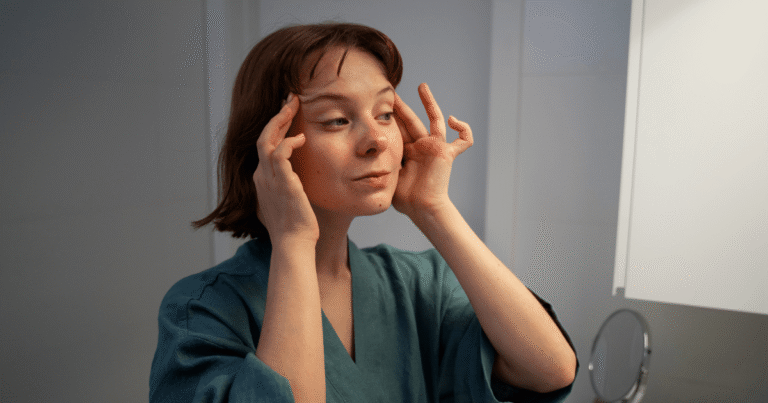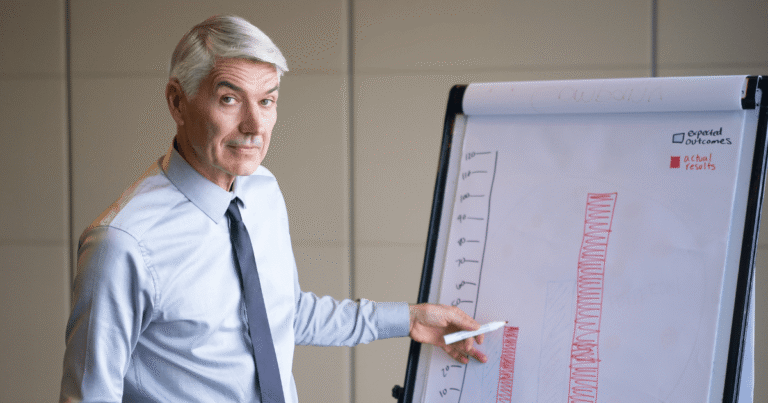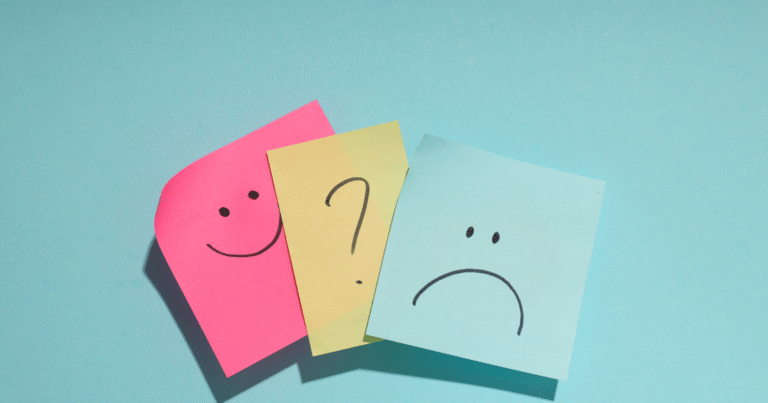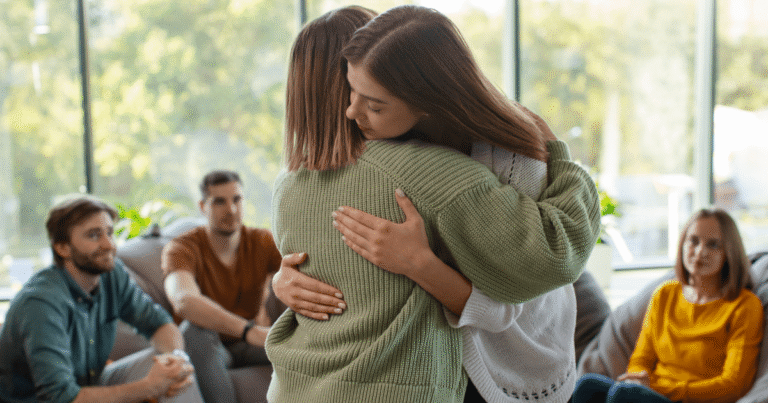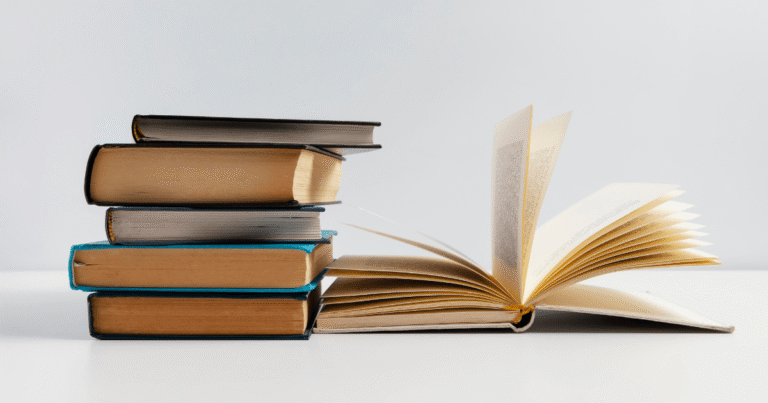What Is Social Physique Anxiety? Complete Definition, Symptoms, and Treatment Guide
Understanding social physique anxiety: the fear of body judgment that prevents millions from enjoying fitness activities and affects overall well-being.
Social Physique Anxiety: The Complete Definition
Social physique anxiety is best defined as: A specific form of social anxiety characterized by distress, worry, or shame that arises from the perception that one’s physical appearance is being negatively evaluated by others, particularly regarding body shape, size, weight, or overall physique.
This condition represents more than simple self-consciousness about appearance. It’s a clinically recognized form of anxiety that can significantly impact life choices, physical activity participation, and overall mental health. Unlike general body image concerns, social physique anxiety specifically involves fear of evaluation by others rather than just personal dissatisfaction with appearance.
Key Characteristics That Define Social Physique Anxiety:
Fear-Based Response:
- Anticipatory anxiety before entering situations where the body might be visible
- Intense worry about others’ judgments of physical appearance
- Catastrophic thinking about potential negative evaluations
Situation-Specific Triggers:
- Physical activity settings like gyms, pools, or sports facilities
- Clothing-related situations requiring less coverage (swimwear, athletic wear)
- Evaluative environments where body comparison is likely
Functional Impairment:
- Avoidance behaviors that limit participation in healthy activities
- Reduced quality of life due to missed opportunities and experiences
- Physical health consequences from avoiding exercise and fitness activities
Understanding Social Physique Anxiety vs. Related Conditions
Social Physique Anxiety vs. General Body Image Issues
Social Physique Anxiety:
- External focus: Fear of others’ judgments and evaluations
- Situational triggers: Anxiety peaks in evaluative social environments
- Behavioral avoidance: Specifically avoiding situations where body is visible to others
- Social component: Anxiety directly tied to presence of other people
General Body Image Issues:
- Internal focus: Personal dissatisfaction with appearance regardless of others
- Consistent concerns: Negative body image present in private and public settings
- Self-evaluation: Focus on personal standards rather than perceived social judgment
- Private distress: May feel equally uncomfortable alone or with others
Social Physique Anxiety vs. Body Dysmorphic Disorder
Social Physique Anxiety:
- Realistic perception: Generally accurate view of physical appearance
- Social fear: Anxiety centered on others’ potential negative judgments
- Situational distress: Symptoms triggered by specific social contexts
- Functional focus: Primarily affects participation in physical activities
Body Dysmorphic Disorder (BDD):
- Distorted perception: Preoccupation with imagined or minor physical flaws
- Pervasive impact: Affects multiple areas of life beyond physical activity
- Compulsive behaviors: Repetitive checking, grooming, or seeking reassurance
- Clinical severity: Meets criteria for formal psychiatric diagnosis
Social Physique Anxiety vs. Social Anxiety Disorder
Social Physique Anxiety:
- Body-specific focus: Anxiety specifically about physical appearance evaluation
- Activity-related triggers: Primarily affects physical activity and fitness contexts
- Appearance concerns: Fear centers on body shape, size, and physical attributes
- Targeted avoidance: Avoids situations where body is visible or evaluated
Social Anxiety Disorder:
- Broad social fear: Anxiety about various types of social evaluation
- Multiple triggers: Fear of judgment about behavior, speech, performance, etc.
- General social concerns: Worry about appearing foolish, incompetent, or embarrassing
- Wide avoidance: Avoids many types of social and performance situations
Comprehensive Symptoms of Social Physique Anxiety
Emotional and Cognitive Symptoms
Anticipatory Anxiety:
- Intense worry for days or weeks before gym visits or beach trips
- Catastrophic thinking about potential negative judgments from others
- Rumination about past incidents involving body-related embarrassment
- Mental rehearsal of worst-case scenarios in evaluative environments
In-the-Moment Emotional Responses:
- Acute anxiety when entering fitness facilities or changing in locker rooms
- Shame and embarrassment about physical appearance in social settings
- Self-consciousness that interferes with ability to focus on activities
- Anger or frustration at feeling judged or evaluated by others
Cognitive Distortions:
- Mind reading: Assuming others are thinking negatively about your body
- Spotlight effect: Believing everyone is focused on and scrutinizing your appearance
- Catastrophizing: Imagining worst-case scenarios about body-related judgment
- All-or-nothing thinking: Believing you must look perfect or shouldn’t participate
Physical Symptoms
Autonomic Nervous System Responses:
- Rapid heartbeat when approaching gyms or athletic facilities
- Sweating beyond what’s normal for physical activity
- Trembling or shaking when changing clothes in public spaces
- Shortness of breath in evaluative physical environments
Stress-Related Physical Symptoms:
- Muscle tension particularly in shoulders, neck, and jaw
- Nausea or stomach upset before or during physical activities
- Headaches related to anxiety about body evaluation
- Sleep disturbances when anticipating body-exposing activities
Behavioral Symptoms and Avoidance Patterns
Direct Avoidance Behaviors:
- Complete gym avoidance: Never joining fitness facilities or canceling memberships
- Swimming avoidance: Refusing to swim or participate in water activities
- Sports withdrawal: Quitting team sports or recreational athletic activities
- Beach or pool avoidance: Declining invitations to water-related social events
Compensatory and Safety Behaviors:
- Excessive clothing: Wearing baggy or concealing clothing during exercise
- Time restrictions: Only exercising during off-peak hours to minimize exposure
- Gender segregation: Preferring same-sex environments to reduce evaluation anxiety
- Equipment selection: Choosing machines that hide the body rather than free weights
Exercise-Related Avoidance:
- Class avoidance: Skipping group fitness classes due to body visibility
- Locker room avoidance: Changing at home or avoiding facilities with communal changing areas
- Mirror avoidance: Positioning away from mirrors in gyms and fitness studios
- Social exercise avoidance: Preferring solitary exercise to avoid body comparison
Social and Interpersonal Impact
Relationship Effects:
- Activity restriction: Limiting shared physical activities with friends and family
- Social isolation: Declining invitations that involve body-exposing activities
- Intimacy challenges: Avoiding physical intimacy due to body self-consciousness
- Family impact: Missing children’s swimming lessons or beach vacations
Professional and Educational Consequences:
- Career limitations: Avoiding jobs requiring physical activity or fitness
- Educational impact: Skipping physical education classes or athletic requirements
- Professional development: Missing networking opportunities at fitness-related events
- Health consequences: Avoiding occupational health screenings or medical exams
Root Causes and Contributing Factors
Sociocultural Influences
Media and Social Media Impact:
- Idealized body standards: Constant exposure to unrealistic body ideals through advertising and social media
- Comparison culture: Social media platforms that encourage body comparison and evaluation
- Fitness industry marketing: Messages suggesting inadequacy unless achieving specific body types
- Celebrity and influencer culture: Promoted body standards that are often unattainable for average individuals
Cultural and Societal Factors:
- Western beauty standards: Emphasis on thinness for women and muscularity for men
- Diet culture: Societal messages equating thinness with health, success, and moral virtue
- Fitness culture: Environment that may prioritize appearance over health and enjoyment
- Gender expectations: Different body standards and pressures for men and women
Developmental and Personal History
Childhood and Adolescent Experiences:
- Early body shaming: Comments from family members about weight, size, or development
- Peer teasing or bullying: School experiences involving body-related ridicule or exclusion
- Athletic performance pressure: Coaches or parents emphasizing appearance over performance
- Puberty challenges: Difficult transitions during adolescent body development
Traumatic or Negative Experiences:
- Body-related trauma: Sexual abuse, assault, or inappropriate touching affecting body relationship
- Medical experiences: Illness, injury, or medical procedures affecting body image
- Weight-related discrimination: Experiences of bias or prejudice based on body size
- Athletic injury or failure: Sports-related experiences linking body performance to self-worth
Psychological Factors
Personality Traits:
- Perfectionism: Setting unrealistically high standards for physical appearance
- High self-consciousness: General tendency to be aware of and concerned about others’ evaluations
- Low self-esteem: Underlying feelings of inadequacy extending to physical appearance
- Social comparison tendency: Frequent comparison of oneself to others across multiple domains
Cognitive Patterns:
- Attention bias: Tendency to notice and focus on perceived physical flaws
- Interpretation bias: Tendency to interpret neutral expressions as negative judgments
- Memory bias: Better recall for negative appearance-related feedback than positive
- Attribution patterns: Attributing social difficulties to physical appearance rather than other factors
Biological and Genetic Factors
Genetic Predisposition:
- Anxiety sensitivity: Inherited tendency toward anxiety and stress reactivity
- Temperament factors: Innate behavioral inhibition and shyness
- Family history: Genetic vulnerability to anxiety disorders and body image issues
- Neurotransmitter differences: Brain chemistry variations affecting anxiety and mood
Hormonal Influences:
- Puberty and development: Hormonal changes affecting body image and self-perception
- Menstrual cycle effects: Cyclical changes in body perception and anxiety levels
- Stress hormones: Cortisol and adrenaline responses affecting anxiety sensitivity
- Body composition changes: Natural changes in weight and shape affecting self-perception
Situations and Environments That Trigger Social Physique Anxiety
Fitness and Recreation Settings
Gym and Fitness Center Triggers:
- Weight rooms: Areas with mirrors and potential for body comparison
- Cardio equipment: Machines positioned for visibility by others
- Group fitness classes: High visibility and potential for comparison with instructors and participants
- Swimming pools: Environments requiring minimal clothing and body exposure
Specific Gym-Related Anxiety Triggers:
- Peak hours: Times when gyms are crowded with more potential evaluators
- New member orientations: Situations requiring demonstration of fitness level or body measurements
- Personal training sessions: One-on-one attention focused on body and physical performance
- Fitness assessments: Formal evaluation of physical capabilities and body composition
Recreational and Social Activities
Water-Related Activities:
- Beach outings: Public spaces requiring swimwear and body exposure
- Pool parties: Social events combining body exposure with social evaluation
- Water sports: Activities like surfing, water skiing, or volleyball requiring athletic wear
- Hot tubs and spas: Intimate settings with minimal clothing and close proximity to others
Sports and Athletic Participation:
- Team sports: Activities with uniforms that may highlight body shape
- Individual sports: Activities like tennis, golf, or running where performance is visible
- Recreational leagues: Adult sports participation with varying fitness levels
- Competitive events: Races, tournaments, or competitions with spectators
Healthcare and Professional Settings
Medical Environments:
- Physical exams: Medical appointments requiring body examination
- Specialist consultations: Visits to dermatologists, orthopedists, or other body-focused specialists
- Physical therapy: Treatment requiring body exposure and physical manipulation
- Fitness testing: Occupational or medical fitness evaluations
Professional Situations:
- Work wellness programs: Employee fitness initiatives or health screenings
- Corporate retreats: Work events including physical activities or team building
- Professional sports: Careers requiring body performance and appearance
- Modeling or entertainment: Industries with explicit body evaluation and appearance standards
Comprehensive Assessment and Measurement
Validated Assessment Tools
Social Physique Anxiety Scale (SPAS): The most widely used assessment tool for social physique anxiety, measuring concerns about body evaluation in physical activity contexts.
Sample SPAS items include:
- “I am comfortable with how fit my body appears to others”
- “It would make me uncomfortable to know others were evaluating my physique”
- “When I am not in good physical shape, I prefer that others not see my body”
- “I am comfortable with others evaluating my physique”
Physical Appearance State and Trait Anxiety Scale (PASTAS): Measures both temporary (state) and ongoing (trait) anxiety about physical appearance in various situations.
Body Image Anxiety Scale: Assesses anxiety specifically related to body image across different contexts and situations.
Self-Assessment Questions
Emotional Response Evaluation:
- Do you experience significant anxiety when thinking about others seeing your body?
- Does the thought of wearing revealing clothing in public cause distress?
- Do you worry excessively about what others think of your physical appearance?
- Does anxiety about your body prevent you from participating in activities you would otherwise enjoy?
Behavioral Pattern Assessment:
- Do you avoid gyms, pools, or other fitness facilities due to body concerns?
- Have you stopped participating in sports or physical activities due to appearance anxiety?
- Do you choose clothing specifically to hide your body shape?
- Do you exercise only in private to avoid being seen by others?
Functional Impact Evaluation:
- Has concern about body evaluation affected your relationships?
- Do you miss social events because they involve body exposure?
- Has your physical health suffered due to avoiding exercise?
- Do appearance concerns interfere with your daily life activities?
Evidence-Based Treatment Approaches
Cognitive Behavioral Therapy (CBT)
Core CBT Techniques for Social Physique Anxiety:
Cognitive Restructuring:
- Identifying negative thought patterns: Recognizing catastrophic thinking about body evaluation
- Evidence examination: Challenging assumptions about others’ judgments and focus
- Balanced thinking development: Creating more realistic and helpful thought patterns
- Thought stopping techniques: Interrupting obsessive worry about appearance
Behavioral Interventions:
- Graduated exposure: Systematic approach to gradually facing feared situations
- Activity scheduling: Planning enjoyable physical activities regardless of appearance concerns
- Behavioral experiments: Testing negative predictions about others’ reactions
- Response prevention: Resisting safety behaviors and avoidance patterns
Specific CBT Protocol for Social Physique Anxiety:
Phase 1: Assessment and Psychoeducation (Sessions 1-3)
- Comprehensive assessment of symptoms and functional impairment
- Education about social physique anxiety and its maintaining factors
- Development of personalized treatment goals and motivation building
- Introduction of self-monitoring techniques for thoughts and behaviors
Phase 2: Cognitive Skills Development (Sessions 4-7)
- Training in identifying automatic negative thoughts about body evaluation
- Learning cognitive restructuring techniques specific to appearance anxiety
- Developing self-compassion and acceptance-based thinking patterns
- Practicing new thought patterns through role-play and homework exercises
Phase 3: Exposure and Behavioral Change (Sessions 8-15)
- Creating hierarchy of feared body-evaluation situations
- Systematic exposure to increasingly challenging physical activity settings
- Elimination of safety behaviors and avoidance patterns
- Real-world practice in gyms, pools, and other anxiety-provoking environments
Phase 4: Maintenance and Relapse Prevention (Sessions 16-20)
- Consolidation of gains and development of long-term coping strategies
- Planning for future challenges and potential setbacks
- Integration of physical activity into regular lifestyle
- Development of ongoing support systems and resources
Acceptance and Commitment Therapy (ACT)
ACT Principles Applied to Social Physique Anxiety:
Mindfulness and Present-Moment Awareness:
- Body awareness exercises: Learning to experience physical sensations without judgment
- Thought observation: Noticing anxious thoughts without being controlled by them
- Emotion acceptance: Allowing anxiety to exist without struggling against it
- Mindful movement: Engaging in physical activity with full present-moment awareness
Values Clarification:
- Identifying personal values: Understanding what truly matters beyond appearance
- Value-based goal setting: Creating physical activity goals aligned with personal values
- Committed action: Taking steps toward valued activities despite appearance anxiety
- Flexibility development: Adapting goals and actions when anxiety interferes
Psychological Flexibility Training:
- Defusion techniques: Learning to see thoughts as thoughts rather than facts
- Acceptance strategies: Developing willingness to experience anxiety without avoidance
- Self-as-context: Developing perspective on self that goes beyond physical appearance
- Workability focus: Evaluating behaviors based on effectiveness rather than comfort
Body Image Therapy
Specialized Interventions for Body-Related Concerns:
Body Appreciation Training:
- Gratitude exercises: Focusing on body function and capabilities rather than appearance
- Body neutrality practice: Developing neutral rather than negative body relationship
- Strength-based perspective: Emphasizing what the body can do rather than how it looks
- Self-compassion development: Treating oneself with kindness regarding body image
Mirror Work and Body Exposure:
- Graduated mirror exposure: Systematic desensitization to seeing one’s body
- Body scanning techniques: Neutral observation of body without judgment
- Clothing challenges: Wearing fitted or revealing clothing in graduated steps
- Photo exposure: Gradually becoming comfortable with body images and photos
Group Therapy Approaches
Benefits of Group Treatment:
- Peer support and understanding: Connection with others experiencing similar struggles
- Normalization of experiences: Learning that body anxiety is common and treatable
- Social skill development: Practicing interactions in supportive environment
- Accountability and motivation: Group support for engaging in challenging activities
Group Therapy Formats:
- Process groups: Open discussion and support for body image and anxiety issues
- Skills-based groups: Structured learning of specific coping techniques
- Activity groups: Group participation in physical activities with therapeutic support
- Support groups: Peer-led gatherings focused on shared experiences and encouragement
Specialized Treatment for Specific Populations
Treatment Adaptations for Athletes
Unique Challenges for Athletes:
- Performance pressure: Expectations for both appearance and athletic performance
- Body as tool: Conflict between using body functionally and appearance concerns
- Public evaluation: Increased visibility and scrutiny from coaches, teammates, and spectators
- Sport-specific pressures: Different appearance expectations across various sports
Athlete-Specific Interventions:
- Performance-focused mindset: Emphasizing body function and capability over appearance
- Mental performance training: Integration with sports psychology techniques
- Team-based interventions: Working with coaches and teams to reduce appearance pressure
- Identity development: Helping athletes develop identity beyond physical appearance
Gender-Specific Considerations
Treatment for Women:
- Societal pressure awareness: Addressing cultural messages about female body ideals
- Life stage considerations: Adapting treatment for puberty, pregnancy, and menopause
- Media literacy: Developing critical thinking about appearance-related media messages
- Empowerment focus: Building confidence and agency regarding body and exercise choices
Treatment for Men:
- Muscle dysmorphia concerns: Addressing pressure for muscularity and strength
- Emotional expression: Helping men identify and express body-related emotions
- Masculine identity: Exploring how body image affects sense of masculinity
- Body diversity acceptance: Challenging narrow definitions of male physical attractiveness
Age-Specific Adaptations
Adolescent Treatment:
- Developmental considerations: Understanding normal adolescent body changes and concerns
- Peer influence: Addressing social comparison and peer pressure around appearance
- Family involvement: Including parents and caregivers in treatment planning
- School-based intervention: Coordinating with physical education and athletic programs
Adult Treatment:
- Life context integration: Addressing work, family, and relationship impacts
- Health motivation: Emphasizing health benefits of physical activity over appearance
- Time management: Working with busy adult schedules and responsibilities
- Long-term perspective: Developing sustainable approaches to body image and exercise
Older Adult Treatment:
- Aging acceptance: Addressing changes in body function and appearance with age
- Health focus: Emphasizing movement for mobility, strength, and independence
- Social connection: Using group activities to reduce isolation and build community
- Realistic expectations: Adapting goals to current physical capabilities and limitations
Prevention Strategies and Early Intervention
Environmental and Cultural Approaches
Fitness Industry Reform:
- Inclusive marketing: Promoting diverse body types and abilities in fitness advertising
- Staff training: Educating fitness professionals about body image sensitivity
- Facility design: Creating welcoming environments for people of all body types
- Program development: Offering activities focused on function and enjoyment rather than appearance
Educational Initiatives:
- Media literacy programs: Teaching critical evaluation of appearance-related media messages
- Body diversity education: Promoting understanding and acceptance of natural body variation
- Health at every size principles: Emphasizing health behaviors over weight or appearance outcomes
- Anti-bullying programs: Preventing appearance-based teasing and discrimination
Individual Prevention Strategies
Building Body Resilience:
- Early positive body experiences: Encouraging enjoyable physical activities from childhood
- Functional focus development: Emphasizing what bodies can do rather than how they look
- Self-compassion training: Learning to treat oneself with kindness regarding body image
- Social support building: Cultivating relationships that value individuals beyond appearance
Risk Factor Modification:
- Media consumption awareness: Mindful consumption of appearance-focused media content
- Social comparison reduction: Developing strategies to reduce appearance-based comparisons
- Stress management: Building general coping skills to manage life stress and pressure
- Body appreciation practice: Regular activities that promote gratitude for body function
Long-Term Management and Maintenance
Developing Sustainable Coping Strategies
Daily Practices:
- Mindful movement: Engaging in physical activity with focus on sensation and enjoyment
- Body gratitude exercises: Regular appreciation for body function and capabilities
- Challenging negative thoughts: Ongoing practice of cognitive restructuring techniques
- Values-based decisions: Making choices about physical activity based on personal values
Crisis Management Plans:
- Early warning signs: Recognizing when social physique anxiety is increasing
- Coping strategy toolkit: Having specific techniques readily available for difficult moments
- Support system activation: Knowing when and how to reach out for help
- Professional backup: Maintaining connection with mental health professionals for additional support
Building Long-Term Body Acceptance
Ongoing Development:
- Continuous learning: Staying informed about body image research and healthy approaches
- Community involvement: Participating in body-positive communities and activities
- Advocacy participation: Supporting efforts to reduce appearance-based discrimination
- Personal growth: Developing identity and self-worth beyond physical appearance
Maintenance Strategies:
- Regular self-assessment: Monitoring body image and anxiety levels over time
- Skill refreshers: Periodic review and practice of learned coping techniques
- Goal adjustment: Adapting physical activity goals as life circumstances change
- Professional check-ins: Occasional therapy sessions for support and guidance
Resources and Support Systems
Professional Resources
Mental Health Professionals:
- Clinical psychologists specializing in body image and anxiety disorders
- Licensed clinical social workers with expertise in eating disorders and body image
- Psychiatrists for medication management when anxiety is severe
- Specialized body image therapists with specific training in appearance-related concerns
Fitness and Health Professionals:
- Health at Every Size (HAES) practitioners promoting weight-inclusive approaches
- Intuitive eating counselors helping develop healthy relationships with food and body
- Adaptive fitness specialists working with diverse bodies and abilities
- Sport psychologists for athletes dealing with body image and performance anxiety
Community Resources
Support Groups and Organizations:
- National Eating Disorders Association (NEDA) providing body image resources and support
- Body Positive organizations promoting acceptance and diversity
- Local support groups for body image and anxiety concerns
- Online communities offering peer support and shared experiences
Educational and Advocacy Organizations:
- Association for Size Diversity and Health promoting HAES principles
- National Association of Anorexia Nervosa and Associated Disorders providing education and support
- Academy for Eating Disorders offering professional and public education resources
- Local universities with research programs and training clinics
Self-Help Resources
Books and Publications:
- “Body Positive Power” by Megan Crabbe
- “Health at Every Size” by Lindo Bacon
- “The Body Is Not an Apology” by Sonya Renee Taylor
- “Body Respect” by Lindo Bacon and Lucy Aphramor
Apps and Digital Tools:
- Mindfulness apps with body scan and self-compassion exercises
- Recovery apps for tracking thoughts and behaviors
- Fitness apps focused on function rather than appearance
- Support community apps for connection with others experiencing similar challenges
Websites and Online Resources:
- National Eating Disorders Association website with comprehensive body image resources
- Body positive blogs and social media accounts promoting acceptance and diversity
- Research databases for accessing current scientific information
- Professional organization websites for finding qualified practitioners
Conclusion: Moving Toward Body Freedom and Physical Joy
Social physique anxiety represents a significant but treatable condition that affects millions of people’s relationships with their bodies and physical activity. Understanding that this anxiety is specifically about fear of others’ judgments—rather than simply personal body dissatisfaction—is crucial for effective treatment and recovery.
Key takeaways for understanding and addressing social physique anxiety:
Recognition is the first step: Acknowledging that fear of body evaluation is preventing participation in enjoyable and healthy activities opens the door to change.
Treatment is effective: Evidence-based approaches like CBT, ACT, and specialized body image therapy have strong success rates for reducing symptoms and improving quality of life.
You’re not alone: Social physique anxiety is common, especially in appearance-focused cultures, and many people successfully overcome these challenges.
Function over form: Learning to appreciate what your body can do rather than focusing solely on how it looks is key to developing a healthier relationship with physical activity.
Values matter: Making decisions about physical activity based on personal values (health, enjoyment, social connection) rather than appearance concerns leads to more sustainable and fulfilling engagement.
Support is available: Professional help, community resources, and peer support can provide the tools and encouragement needed for recovery.
The goal isn’t to eliminate all body awareness or become completely indifferent to appearance. Instead, it’s to develop a balanced perspective where concern about body evaluation doesn’t prevent you from living fully and engaging in activities that bring joy, health, and connection.
Your body deserves to move with freedom, participate in activities you enjoy, and be treated with respect and appreciation. Social physique anxiety doesn’t have to be a permanent barrier to physical joy and social connection. With understanding, support, and appropriate treatment, you can develop the confidence to engage with the world in the way you truly want.
Important Note: This guide is for educational purposes only and is not intended to replace professional medical or psychological advice. If social physique anxiety is significantly impacting your life, relationships, or physical health, please consider consulting with a qualified mental health professional who specializes in body image and anxiety disorders.
Keywords: social physique anxiety definition, body anxiety symptoms, gym anxiety, social physique anxiety scale, body image anxiety, physical appearance anxiety, fitness anxiety, social body anxiety treatment


